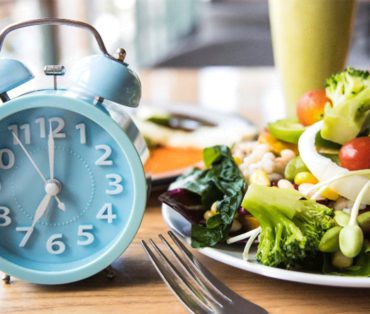Eating Out and Eating Well Without Destroying Your Diet
Navigating the healthier options on a restaurant menu can be difficult. We asked an expert Brian Wansink, Ph.D., director of the Cornell Food and Brand Lab in Ithaca, New York, and author of Slim by Design: Mindless Eating Solutions to Everyday Life to show us how.
Dr. Wansink has studied restaurant menus, restaurant foods, and restaurants themselves to discern how to help us eat out and eat healthfully. Here are his key tips:
Read outside the Z
Most of us read menus in a “Z” pattern, starting at the top left, moving to the top right, going to the middle, then veering down to the bottom left and, finally, to the bottom right. “So that’s exactly where restaurants put their higher-margin and best-selling items—in the corners and directly in the middle, since that’s where your eyes are naturally drawn,” says Wansink. “Better-for-you foods aren’t typically best-sellers, so if you want to find a healthful or lighter dish, you have to purposefully look for it in the less trafficked areas of the menu. Or, you have to ask for it.”
Ask your waiter for help
Pretty straightforward, no? Actually, says Wansink, if you’re in the mood for a lighter item that is not a salad, it really isn’t. “You have to word your request very precisely,” he says. “You have to say, ‘What are two or three of your most popular lighter menu items?’ If you ask, instead, ‘What are two or three of your most popular healthier items,’ your waiter’s only going to point to the salads.”
Follow the adjectives
Wansink and his team paired more than 2,000 descriptions of menu items with their kilojoule contents, and clear patterns emerged. “Some very specific adjectives are almost always associated with high-kilojoule meals and others are frequently used to describe low-caloric meals,” he says. “The trick is to avoid the former and search the menu for the latter.”
The adjectives that indicate diet destroyers include buttery, creamy, crispy, crunchy, fried, deep-fried, pan-fried, and loaded. And those that restaurants use to describe lighter options? Seasoned, roasted, light, fat-free, reduced, marinated, fresh, tangy, and steamed.
Stay away from the kitchen
You can order wisely, sure. But if you’re seated close to the kitchen, the hunger-enhancing aromas wafting from it may encourage you to fill up before your lighter meal even arrives. “The farther back in the restaurant you sit, the closer you are to the kitchen and its delicious smells, the more bread you’ll eat,” says Wansink. “Unfortunately, it’s a proven fact. Don’t even try to fight it, just try to avoid it.”








